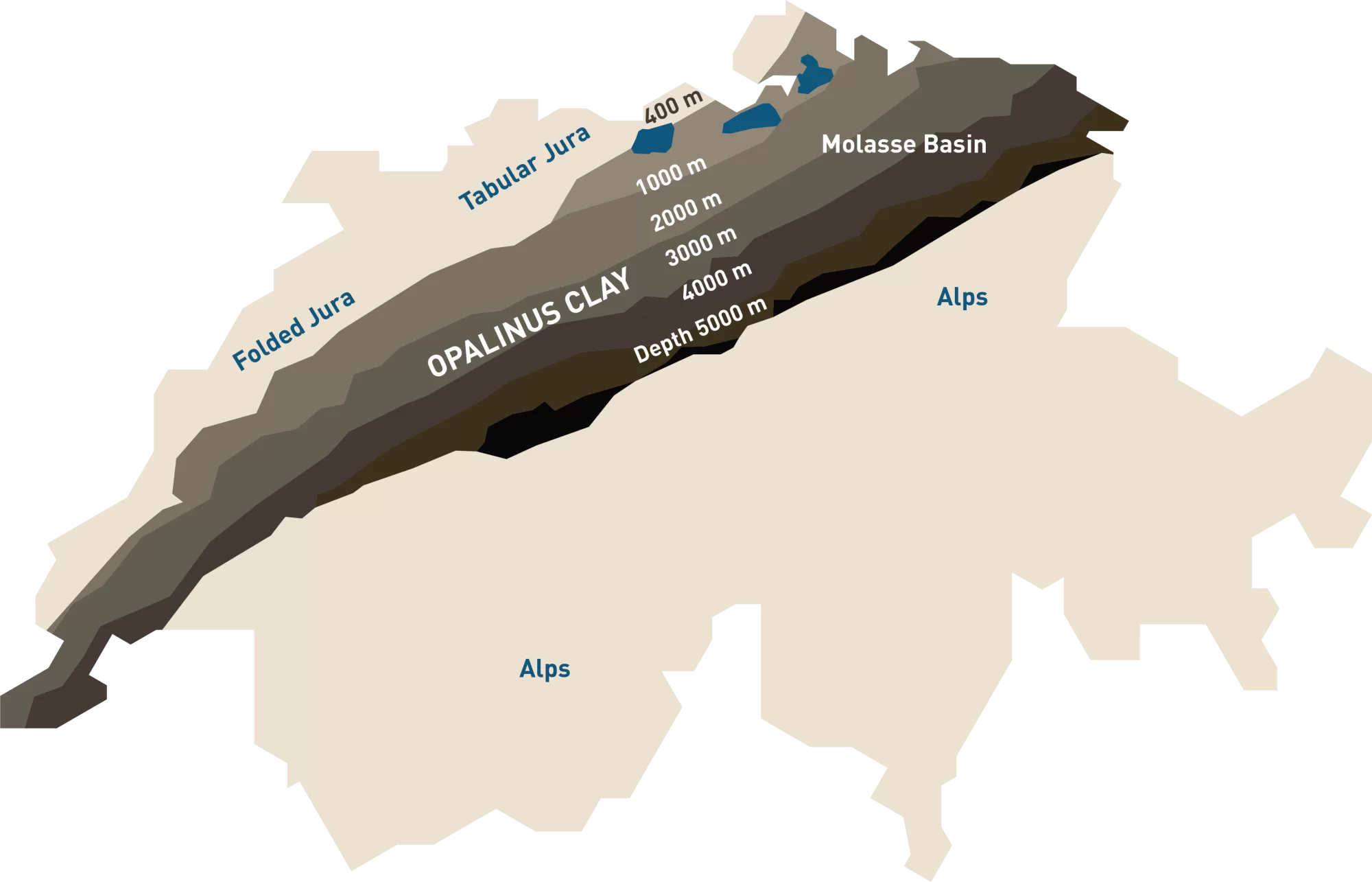
The answer is that this is where the Opalinus Clay has the ideal depth, quality and extent and is also comparatively undisturbed.
Switzerland can be roughly divided into three regions: the Alps, the Molasse Basin and the Jura Mountains. During the alpine orogeny, rock formations fractured and were pushed on top of each other. The underground in the alpine region is so strongly deformed that it is not suitable for a repository – or at least not for a high-level waste repository. The Folded Jura and the Tabular Jura, both located in northwest Switzerland, are mostly strongly deformed and therefore not an option. In contrast, the Molasse Basin (Swiss Plateau) located between the Alps and the Folded Jura shows considerably less deformation, particularly in the central and eastern sections. The Opalinus Clay is also found here. In the Folded Jura and in the very north of Switzerland, it is located close to the surface. From there, it continuously dips towards the Alps where it reaches a depth of several kilometres.
The construction of a deep geological repository requires comparatively large areas that show little deformation. At the same time, the Opalinus Clay also has to be located at the right depth: between 400 and 1,000 metres. These two conditions are met only in the Molasse Basin of Northern Switzerland, both at its northern margin and in the adjacent, eastern part of the Tabular Jura. This is also where the three siting regions are situated, which Nagra has investigated in detail over the past few years.
